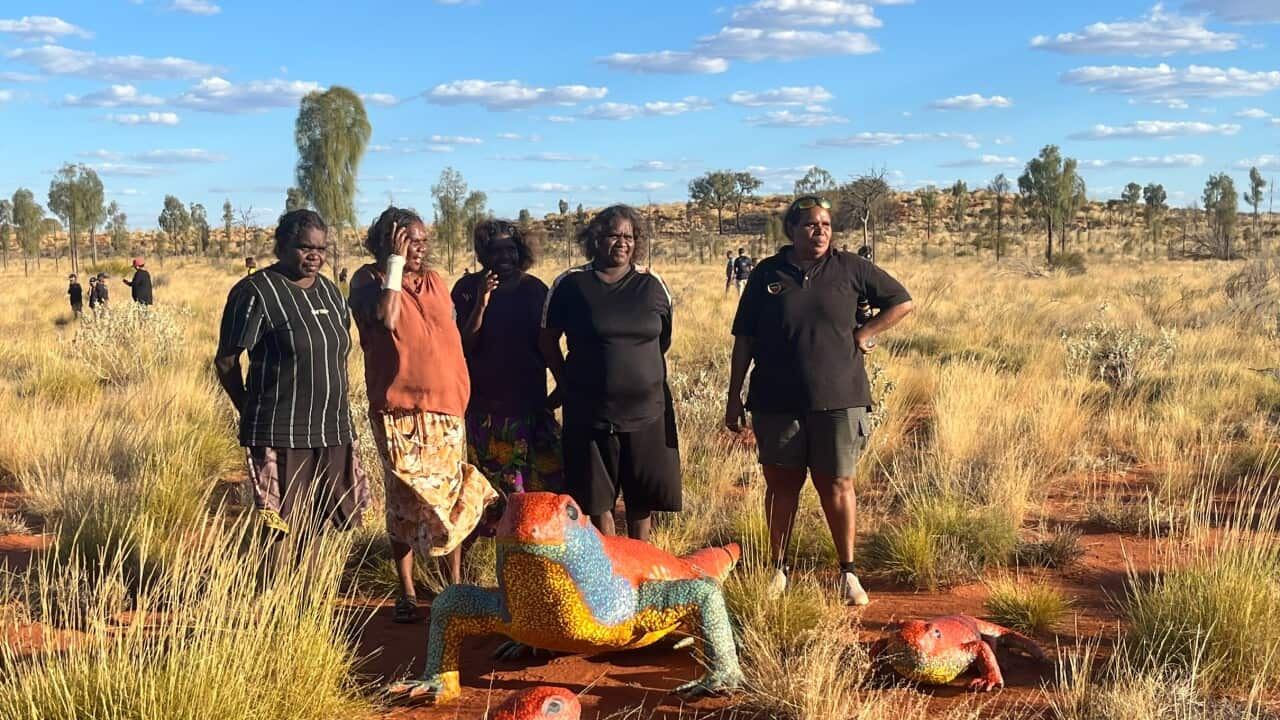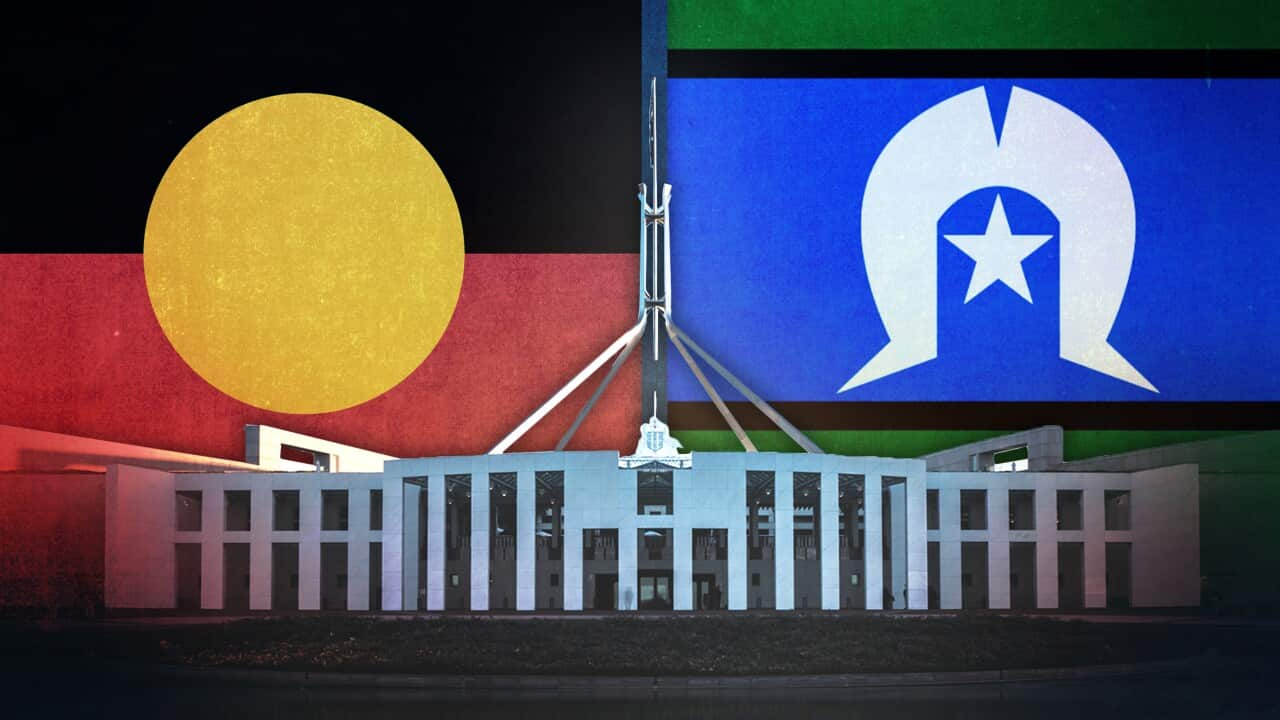Key Points
- The Great Desert Skink was once a food source for a number of Indigenous nations but is now a threatened species.
- Indigenous Rangers are collecting scientific data as part of a new Indigenous-led National Recovery Plan for the animal.
- The Great Desert Skink is also known as the tjakura, mulyamiji, tjalapa, warrana or nampu.
A project aiming to secure the future of a native burrowing reptile species in central Australia is also helping Indigenous rangers reclaim lost cultural knowledge.
The Great Desert Skink was once a food source for a number of Indigenous nations, but due to mostly predation from cats and foxes, it has disappeared from much of its range since Australia was colonised.

Janice Carroll Walkatjara artist holding a Great Desert Skink Source: Supplied
Despite spending time on Country doing bush trips with her family, often hunting goanna, the animal she knows as the tjakuṟa was not very familiar to her.
Ms Okai is one of a number of Indigenous rangers from across the Northern Territory, Western Australia and South Australia who are collecting scientific data as part of a new Indigenous-led National Recovery Plan for the Great Desert Skink.
The lizards usually measure about 20 centimetres long and weigh about 350 grams and the species occurs almost exclusively on Aboriginal land.
Working together with scientists and land managers, they hope to gain insight into the threatened species to be used to save it from becoming extinct.
A decades old, grainy video of Aboriginal women talking about the lizards was shared with Ms Okai and other Anangu and Pitjantjatjara women taking part in the survey.
“They were talking about tjakura and writing it in a picture and talking about it,” she said.
“We learned about the habitats where they live, what their burrows look like, what it eats, was it edible, the tracks it makes and how to hold tjakuṟa.”

As part of the project local artists have created large sculptures of the Western Desert Skink to build interest in the animal and the work being done as part of the survey. Source: Supplied / Indigenous Desert Alliance
“We have to spot the toilet, because they have one area on the surface on top of the ground where tjakuras come out to make toilets,” she said.
While the group did not spot the nocturnal lizards, they were able to get a look inside a number of underground burrows which are home to family groups who all use the same ‘toilet’ at the surface.
Ms Okai said while it was only day one of a week of skink surveying in the area, she was excited about the knowledge she was gaining about these animals that once had an important place in the lives of her ancestors.
She and others taking part are keen to share that knowledge with their children, so it can once again be shared with future generations.
Raelene Wilson, an Aṉangu Traditional Owner taking part in the survey, said, “The tjakuṟa has got dreaming. We want the young people to learn about it and hold on to it.”
Further surveys will be carried out across the habitat of the tjakura, which in other areas is called mulyamiji, tjalapa, warrana or nampu.

Indigenous Desert Alliance is coordinating the surveys of the skinks. Source: Supplied / Indigenous Desert Alliance
Minister for the Environment and Water, Tanya Plibersek, said the Great Desert Skink was prioritised for action under the Government’s Threatened Species Action Plan.
“The need for action to protect our plants, animals and ecosystems from extinction has never been greater,” Ms Plibersek said.
“We know that any action we take to protect priority species, like the tjakuṟa, will also deliver benefits for other threatened plants and animals across our desert regions.”











